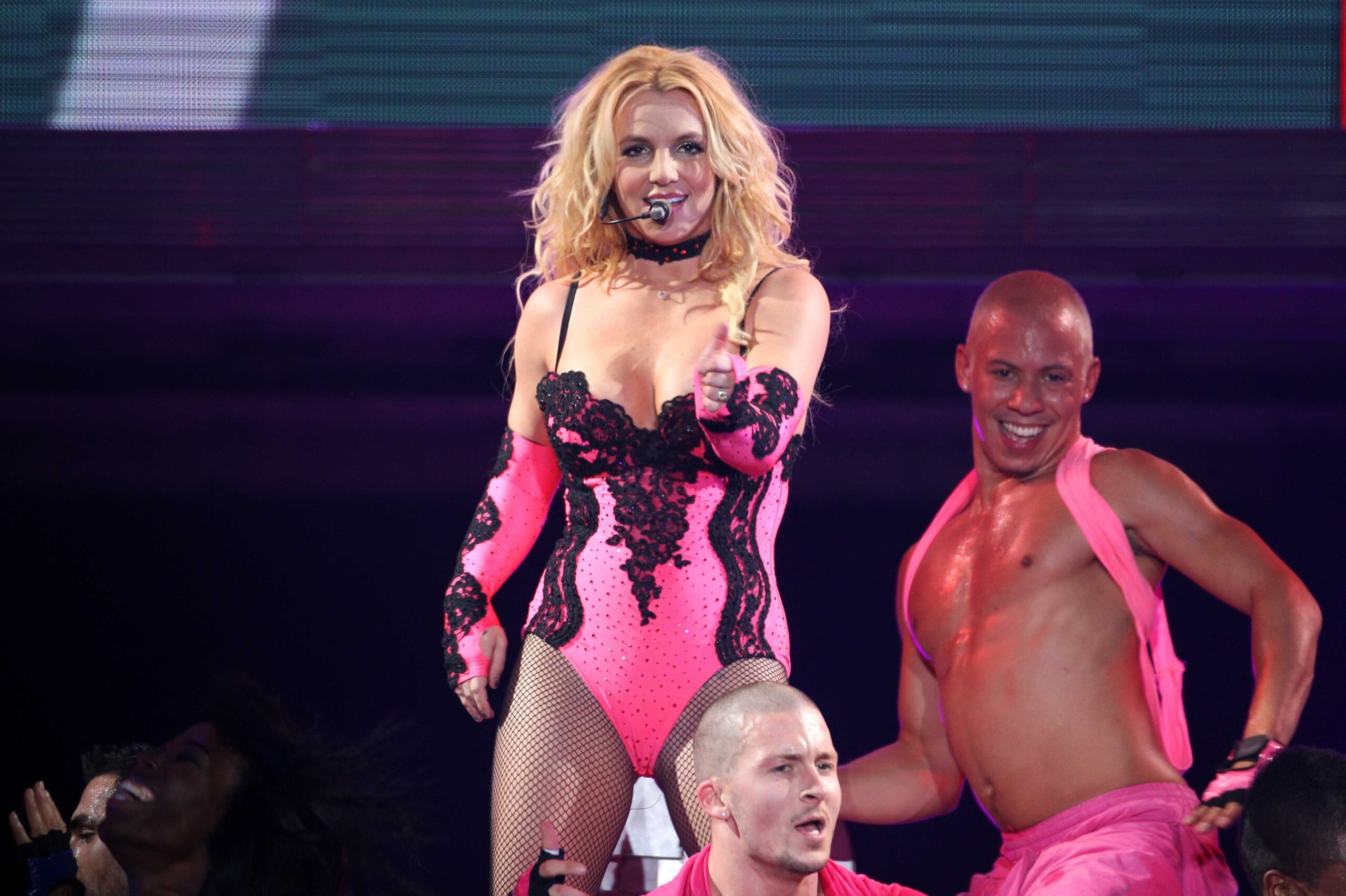CULTURE
Trisha Paytas Needs Help: The Difference Between Gender Nonconforming and Transgender
08 Oct, 19

Shutterstock
I hadn’t heard of Trisha Paytas until she started trending on Twitter for her incredibly misguided “I AM TRANSGENDER (FEMALE TO MALE)” YouTube video.
I got very lucky, but alas, that luck ends here. After falling down the Trisha Paytas rabbit hole (and believe me, this is a rabbit hole), I’ve learned that Paytas is a YouTube star with close to 4.9 million subscribers. Her content consists of vlogs, mukbang, and unlistenable original music, but she’s best known for her constant stream of controversies. These range from “trolling” videos to blatant racism to a video titled “Showering with my Boyfriend” that is exactly what you’d expect.
There’s also this video in which she makes out with inanimate objects while wearing a knee brace, and since I have to live with these images in my head, I’m subjecting you to the same torture:
making out with my couchwww.youtube.com
When someone with a history of blatant self-promotion, bandwagon hopping, and self-proclaimed “trolling” comes out with an all caps “I AM TRANSGENDER” video, the natural inclination is to doubt her sincerity. This instinct doubles when the video description reads: “I’ll be in SAN FRANCISCO SAT OCT 19 and LOS ANGELES OCT 20 TICKETS HERE,” followed by a link to her upcoming concert tour. Genuinely coming out into a community frequently targeted with hatred and violence would probably warrant more subtlety than a typical clickbait “buy my merch” video.
I AM TRANSGENDER (FEMALE TO MALE)www.youtube.com
After watching the entire 15-minute video, I have some mixed feelings. Upfront, I’m not transgender. I don’t claim to speak for the trans community in any way. With that being said, I have close friends who have transitioned and walked me through my own education on the process, alongside the ins-and-outs of the community. My assessment is based entirely upon my understanding of the issue.
So first thing’s first: Paytas’s video is super, duper problematic. One Twitter user compiled a list of just some of the statements Paytas made that led me to shout at my screen. These include assertions like “I am transgender because I wish I had a penis so that my assertiveness would be respected and I wouldn’t be thought of as a bitch,” and also, “I CHOOSE to identify as boy.”
No doubt about it, Paytas’s video is a trainwreck, and I understand where all the backlash is coming from. The way she talks about and misidentifies transgenderism dilutes its seriousness, and the visibility of her platform poses a danger for actual transgender people who need to be taken seriously in order to get the medical and psychological assistance they need.
But here’s the caveat: I don’t think Paytas is attempting to be malicious at the expense of the transgender community. Rather, she seems to be confusing nonconforming gender presentation with being transgender.
One important distinction to make here is between gender nonconformity and gender dysphoria. Gender nonconformity is feeling uncomfortable within established gender roles. The root of these issues lie within social expectations around gender as opposed to one’s own psychology. Gender dysphoria, on the other hand, is a medical diagnosis for people who experience persistent conflict between their gender identity and their biological sex. A gender nonconforming person can present as any gender they want, or choose their gender presentation at will without actually being “transgender.” A transgender person almost always consistently feels that they were born with the wrong body. The difference is dysphoria, and the cure for dysphoria is usually transitioning.
The vast majority of Paytas’s expressions of her “transgender identity” actually just suggest that she’s not comfortable with traditional feminine gender roles. For instance, when she says that she wishes she had a penis so that her assertiveness would be respected, that’s an issue rooted in social norms, not a mental disconnect between her genitals and her gender. Similarly, when she says that she’s transgender because she doesn’t like to wear makeup or that she identifies as a drag queen, Paytas is voicing her discomfort with traditionally feminine gender roles.
In other words, Paytas has every right to express herself as gender nonconforming. She’s more than welcome to present herself as male. But that does not make her transgender. Transgender people don’t choose to be transgender. Nobody chooses to have gender dysphoria. So many transgender issues revolve around access to healthcare procedures to correct the underlying issue of dysphoria. It is not a choice.
I’d like to give Paytas the benefit of the doubt here that she just doesn’t understand the language and terminology involved and is unaware that she’s conflating nonconforming gender presentation with being transgender. But her Tweets in response to the backlash come off very poorly, and she even refers to transgender people as “other trans.”
Paytas’s subsequent apology video (this time titled “apology” in all lowercase and devoid of any concert promotion description) doesn’t fare much better. She seems to think that the backlash stems from the transgender community being unwilling to accept her as transgender due to her appearance and the fact that she has breasts, entirely failing to realize that the issue stems from her conflation of not wanting to conform to gender roles with “choosing” to be transgender.
apologywww.youtube.com
Paytas seems to grasp that her language rubbed people the wrong way, which is a start, but she completely fails to understand why. At one point during her apology video, Paytas laments the possibility of a future romantic partner seeing the title of her previous video and rejecting her for being transgender, despite the fact that she “chooses” how she presents on a daily basis.
At another point, she expresses a bizarre glorification of transgender identity, saying: “…I’ve always been drawn to the transgender community and the movement because [I] just love they can be out and open and people like applauded them.” Paytas’s characterization of transgender identity here is particularly staggering, as it seems to paint transgender identity as a celebration instead of a genuine expression of self that often subjects a person to discrimination and violence.
All of this suggests that Paytas is deeply insecure and is searching for an identity to latch onto. While her attachment to the “transgender” label is misguided and almost definitely incorrect, I’m not sure that makes her worthy of derision. If anything, Paytas strikes me as someone deeply in need of help, guidance, education, and empathy. I sincerely hope she finds it.
- Let Trans Characters Be Trans: The “Trap” Trope Is Still a Slur – Popdust ›
- Don’t Listen to Trisha Paytas’ Nonsense: What to Watch Instead – Popdust ›
- Youtuber Trisha Paytas slammed for transgender-baiting in video ›
- Trisha Paytas Says She’s ‘One Thousand Percent’ Transgender … ›
- Trisha Paytas on Twitter: “I AM TRANSGENDER (FEMALE TO MALE … ›
- Trisha Paytas denies surprise transgender announcement is a ‘joke … ›
- I AM TRANSGENDER (FEMALE TO MALE) – YouTube ›
- YouTube Star Trisha Paytas Says She is Transgender Despite … ›
- Trisha Paytas responds to backlash over transgender … ›
- Trisha Paytas Says She’s ”One Thousand Percent” Transgender in … ›
- YouTuber Trisha Paytas criticized for coming out as transgender … ›
- YouTuber Trisha Paytas slammed after announcing she is … ›












